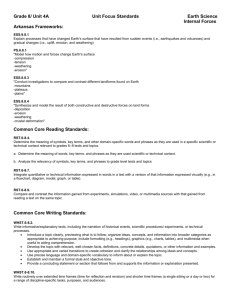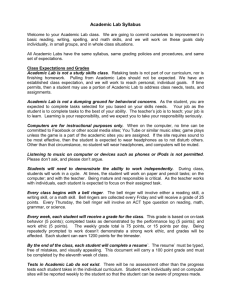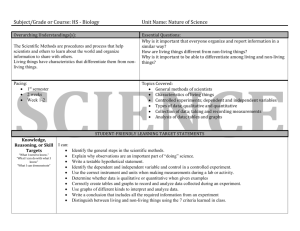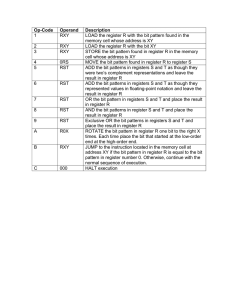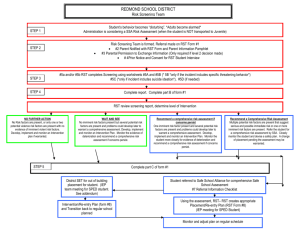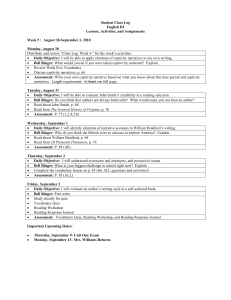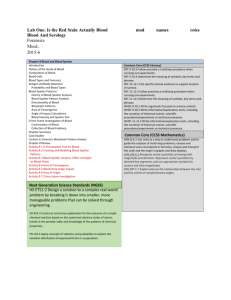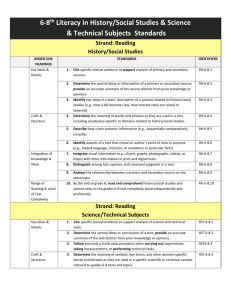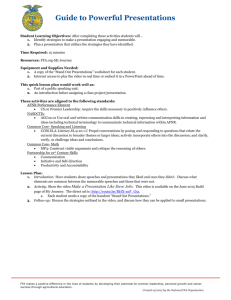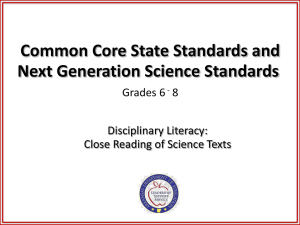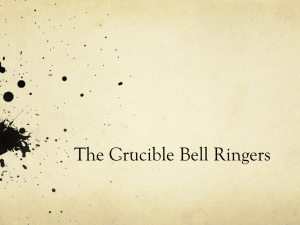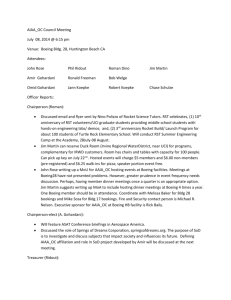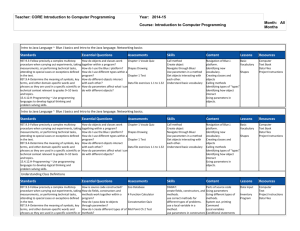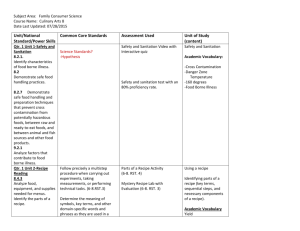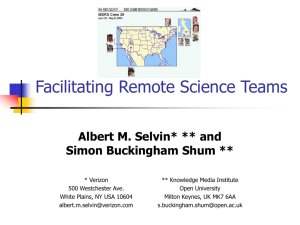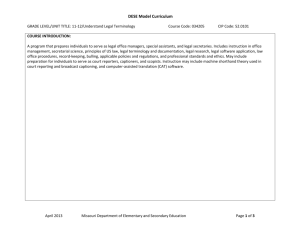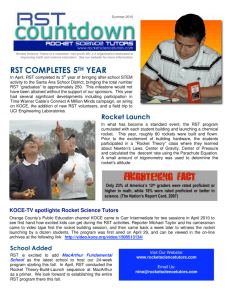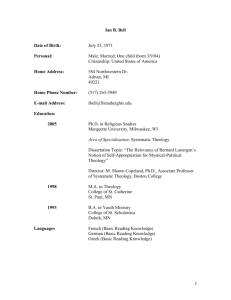lesson plans 11/12
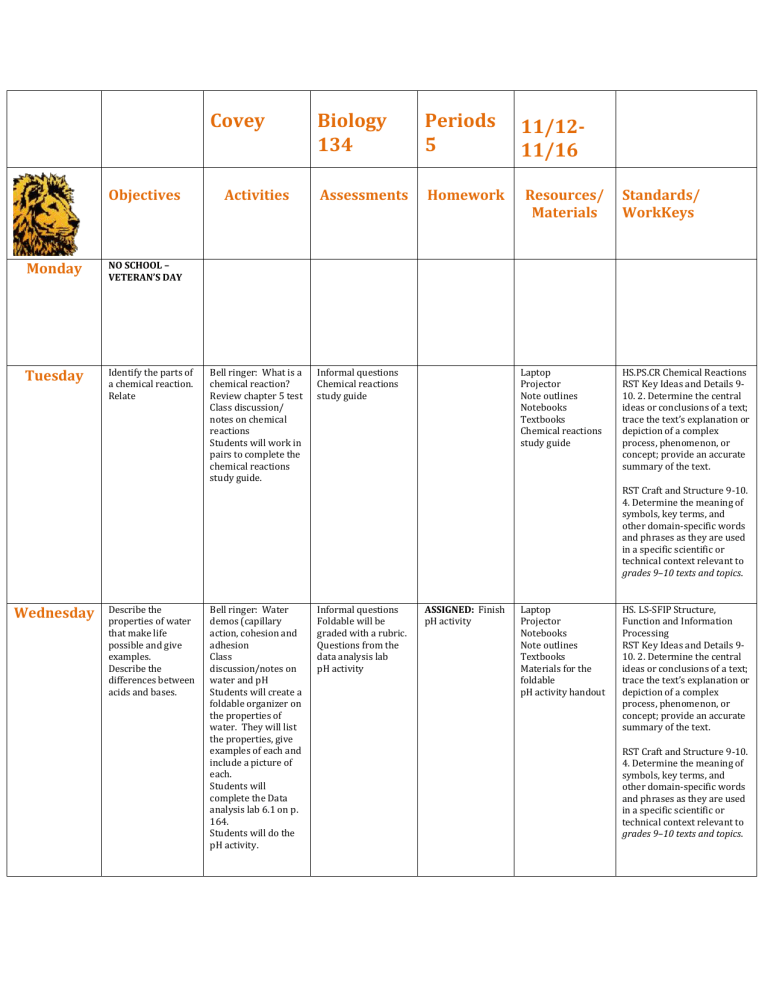
Objectives
Monday
NO SCHOOL –
VETERAN’S DAY
Covey
Activities
Biology
134
Assessments
Periods
5
Homework
11/12-
11/16
Resources/
Materials
Standards/
WorkKeys
Tuesday
Identify the parts of a chemical reaction.
Relate
Bell ringer: What is a chemical reaction?
Review chapter 5 test
Class discussion/ notes on chemical reactions
Students will work in pairs to complete the chemical reactions study guide.
Informal questions
Chemical reactions study guide
Wednesday
Describe the properties of water that make life possible and give examples.
Describe the differences between acids and bases.
Bell ringer: Water demos (capillary action, cohesion and adhesion
Class discussion/notes on water and pH
Students will create a foldable organizer on the properties of water. They will list the properties, give examples of each and include a picture of each.
Students will complete the Data analysis lab 6.1 on p.
164.
Students will do the pH activity.
Informal questions
Foldable will be graded with a rubric.
Questions from the data analysis lab pH activity
Laptop
Projector
Note outlines
Notebooks
Textbooks
Chemical reactions study guide
ASSIGNED: Finish pH activity
Laptop
Projector
Notebooks
Note outlines
Textbooks
Materials for the foldable pH activity handout
HS.PS.CR Chemical Reactions
RST Key Ideas and Details 9-
10. 2. Determine the central ideas or conclusions of a text; trace the text’s explanation or depiction of a complex process, phenomenon, or concept; provide an accurate summary of the text.
RST Craft and Structure 9-10.
4. Determine the meaning of symbols, key terms, and other domain-specific words and phrases as they are used in a specific scientific or technical context relevant to
grades 9–10 texts and topics.
HS. LS-SFIP Structure,
Function and Information
Processing
RST Key Ideas and Details 9-
10. 2. Determine the central ideas or conclusions of a text; trace the text’s explanation or depiction of a complex process, phenomenon, or concept; provide an accurate summary of the text.
RST Craft and Structure 9-10.
4. Determine the meaning of symbols, key terms, and other domain-specific words and phrases as they are used in a specific scientific or technical context relevant to
grades 9–10 texts and topics.
Thursday
Describe the role of carbon in living organisms.
Summarize the 4 major types of organic molecules.
Compare the functions of each group of biological macromolecules.
Bell ringer: What is pH?
Class/discussion notes on organic molecules.
Students will complete the data analysis lab 6.2 on p.
169.
Students will complete the elements in living things activity.
Informal questions
Questions from data analysis lab
Elements in living things activity
ASSIGNED: Finish
Elements in living things activity.
DUE: pH activity
Laptop
Projector
Notebooks
Note outlines
Textbooks
Elements in living things activity handout
Friday
Demonstrate understanding of chemical reactions, pH, properties of water, and macromolecules.
Differentiate between prokaryotic and eukaryotic cells.
Bell ringer: Study
Students will take the quiz on chemical reactions, pH, water and organic molecules.
Students will be do cells coloring sheets.
Chapter 6 quiz
Cell coloring sheets
DUE: Elements in living things activity
Notebook
Textbook
Chapter 6 quiz
HS. LS-SFIP Structure,
Function and Information
Processing
HS.PS.CR Chemical Reactions
RST Key Ideas and Details 9-
10. 2. Determine the central ideas or conclusions of a text; trace the text’s explanation or depiction of a complex process, phenomenon, or concept; provide an accurate summary of the text.
RST Craft and Structure 9-10.
4. Determine the meaning of symbols, key terms, and other domain-specific words and phrases as they are used in a specific scientific or technical context relevant to
grades 9–10 texts and topics.
HS.PS.CR Chemical Reactions
HS. LS-SFIP Structure,
Function and Information
Processing

